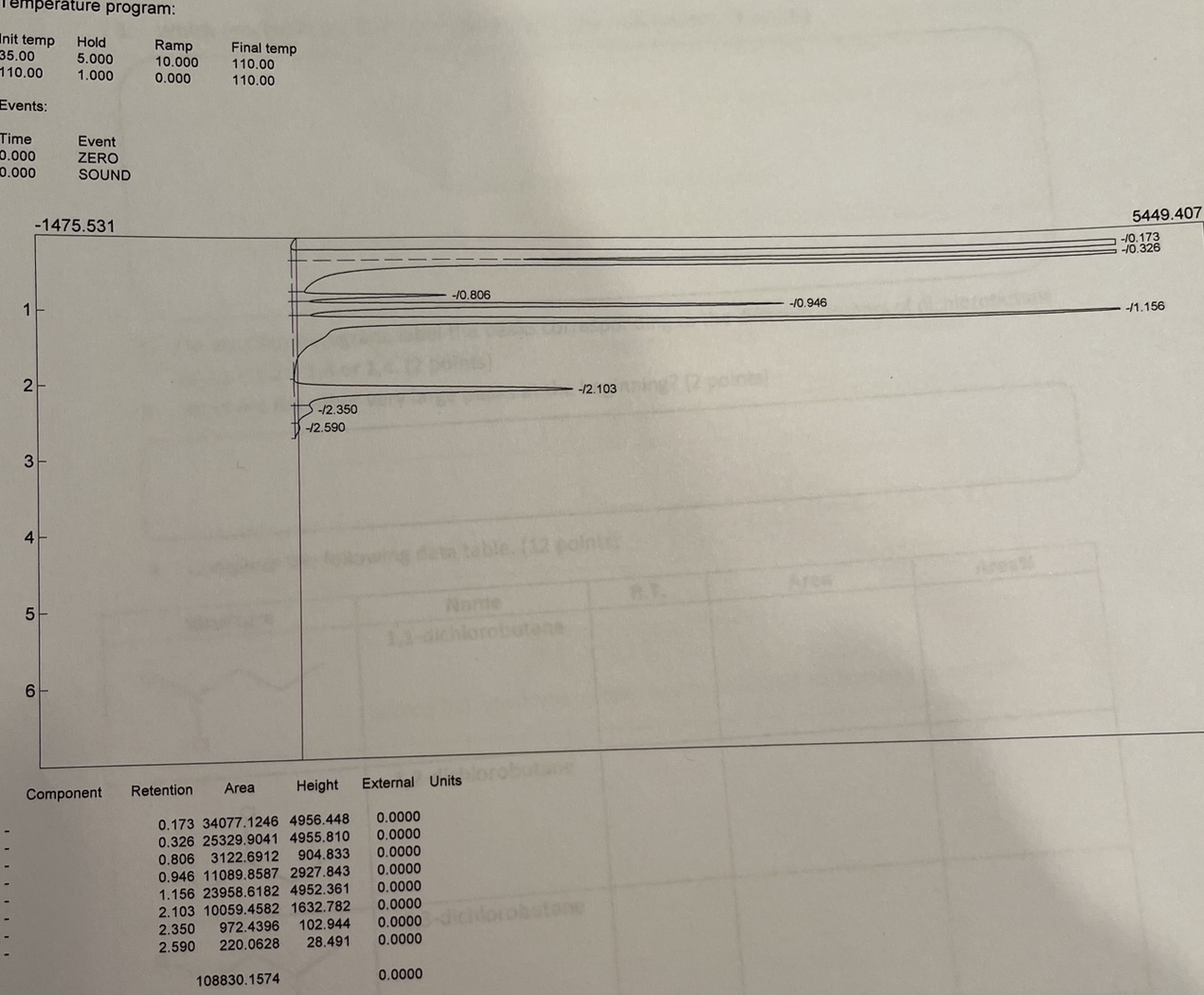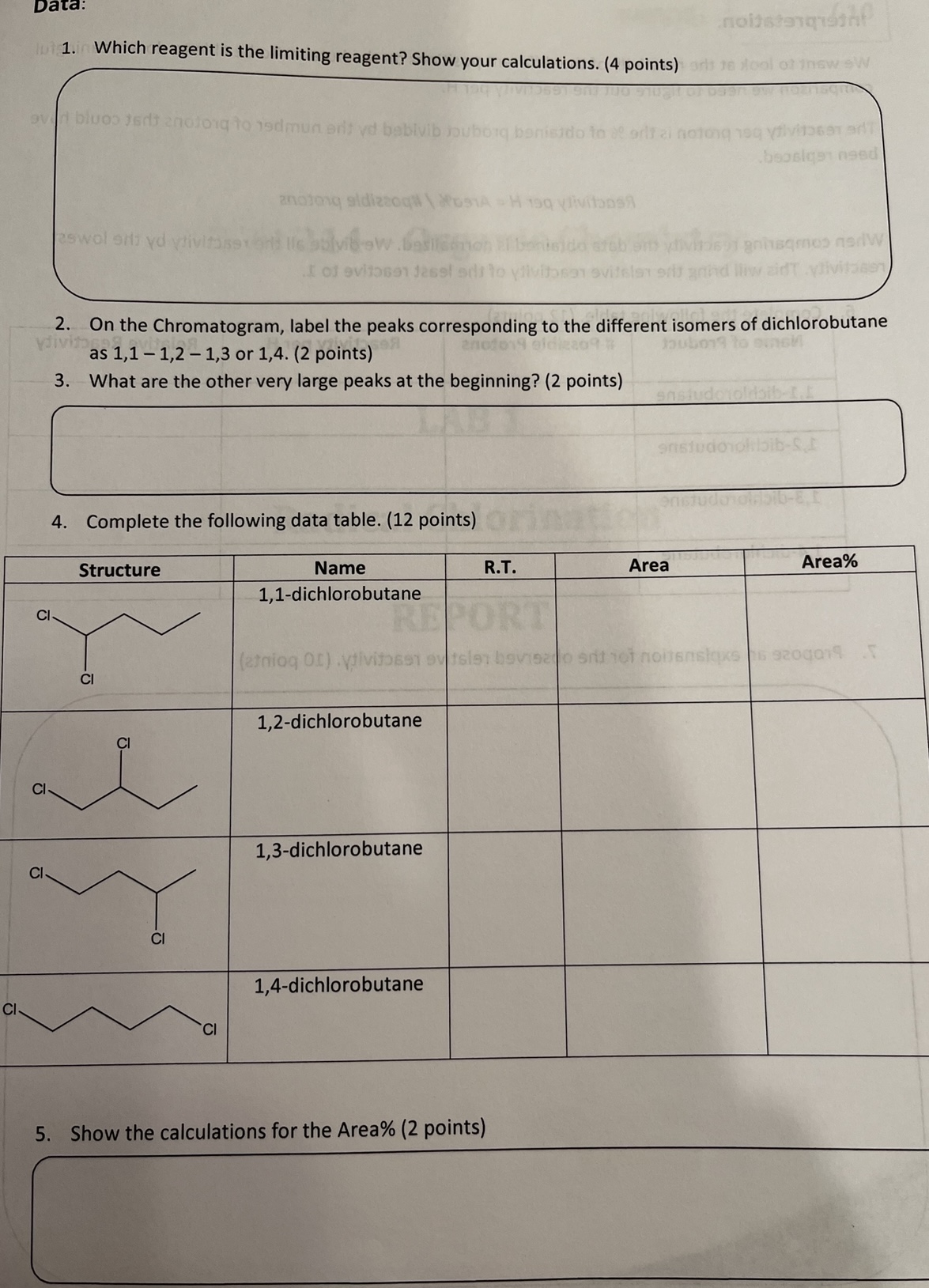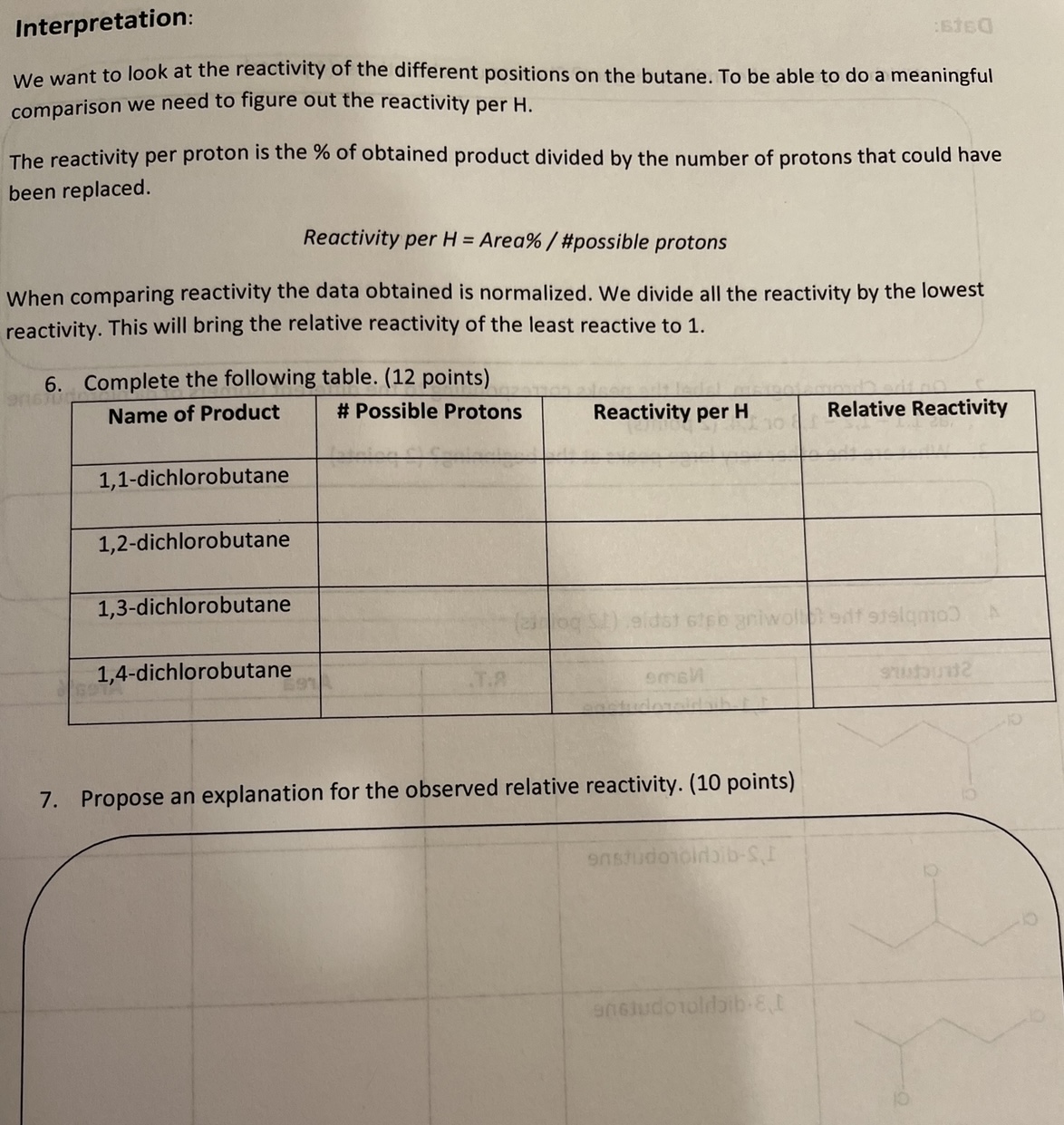Answered step by step
Verified Expert Solution
Question
1 Approved Answer
emperature program: 2. On the Chromatogram, label the peaks corresponding to the different isomers of dichlorobutane as 1,11,21,3 or 1,4 . (2 points) 3. What



Step by Step Solution
There are 3 Steps involved in it
Step: 1

Get Instant Access to Expert-Tailored Solutions
See step-by-step solutions with expert insights and AI powered tools for academic success
Step: 2

Step: 3

Ace Your Homework with AI
Get the answers you need in no time with our AI-driven, step-by-step assistance
Get Started


